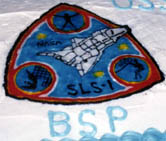| |
I
committed very early on, in high school. I went to high school in
New York City. I had always had an interest in science, and was
fortunate enough to pass the entrance examination for the Bronx
High School of Science. This high school was, and remains, a unique
jewel in the New York City educational system. It gives special
preparation and encouragement to those high school students who
think they might wish to have careers in science. I was fortunate
to be able to take a course in laboratory identification of microbes,
and at that moment, I knew that some aspect of microbiology was
for me.
Later
in college and graduate school, the area of host defenses against
microbes and cancer (immunology) was the most interesting for me.
My entry into working on "Space Immunology" was just by chance,
which proved to me that one never knows where opportunities can
arise. When I started my postdoctoral fellowship in Infectious Diseases
(for researchers, a postdoctoral fellowship is the equivalent of
residency training for physicians) in 1975 at Stanford University,
there were some great changes occurring in microbiology and immunology.
The concept of "cloning", or recombinant DNA technology, was just
emerging. It was thought that all cloning would be done at "P-4",
now known as Biosafety Level 4. What this meant was that it was
believed that for safety, all recombinant DNA work would have to
be done at the highest possible safety level. While this was proven
to be unnecessary, during the mid-1970s this was a hot issue for
debate.
Dr.
Adrian Mandel, who was in charge of microbiology at the NASA Ames
Research Center, was dealing with the "Lunar" Laboratory. This was
the facility that was used for the examination of the "moon rock"
samples returned by the Apollo missions from the moon, when there
was concern that moon microbes might also be returned to Earth with
the rocks. There turned out to be no moon microbes brought back,
but this laboratory was equipped pretty close to P-4 standards.
Dr. Mandel, with thoughts of saving money for the Government, wondered
if the Lunar Laboratory could be converted into a P-4 laboratory
for recombinant DNA technology and save the building of a new laboratory.
He asked the Head of Infectious Diseases at Stanford, Dr. Thomas
Merigan, it someone could be sent down to look the lab over and
see what could be done. Since I was the newest fellow, Dr. Merigan
sent me with some objections on my part, as I had no interest in
this research area.
Although
it became unnecessary to convert the Lunar Laboratory to P-4 conditions
for most recombinant DNA technology, I became very interested in
problems of space immunology. Almost twenty-five years later, after
participating in space immunology experiments in about nine Space
Shuttle flights and three Russian Biosatellites, and publishing
numerous reports of the experiments and ground-based model experiments,
I would say that trip to see the Lunar Laboratory was perhaps the
best and most profitable afternoon I ever spent in my entire career.
|
|
 |




